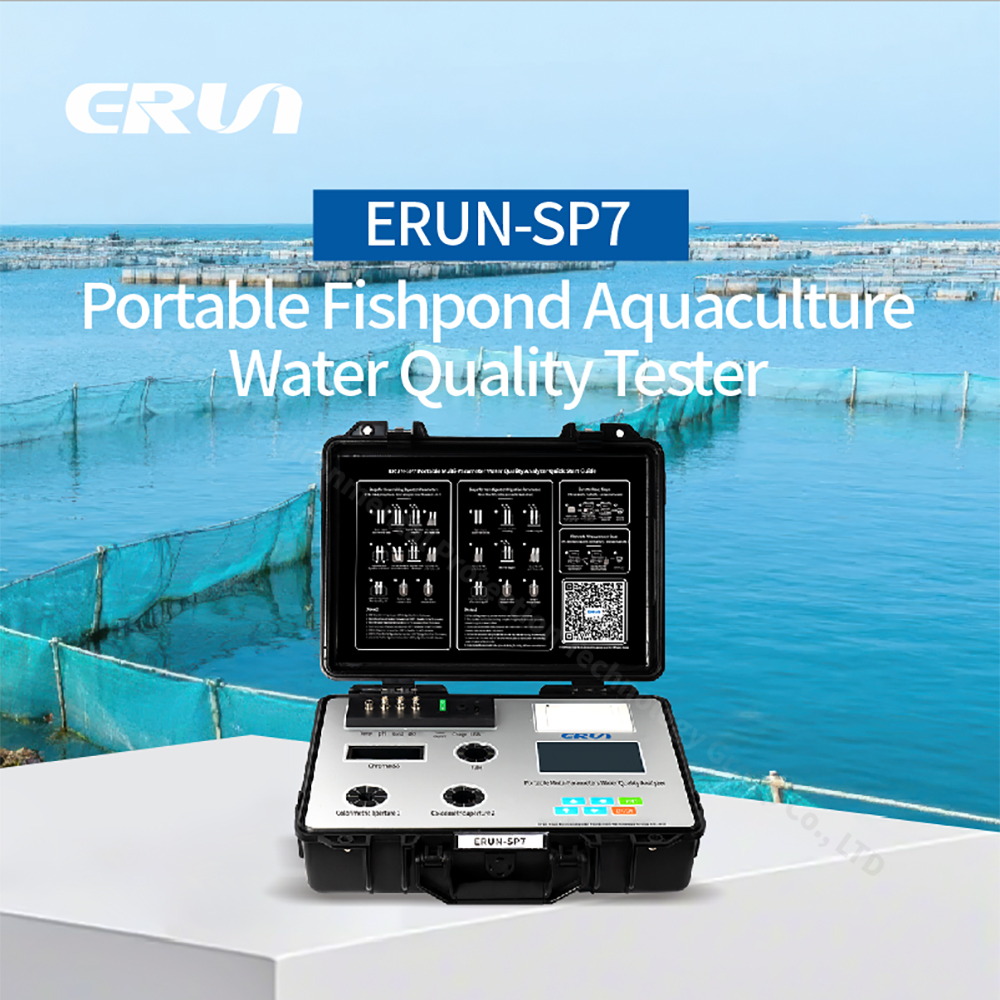Ensuring the safety and quality of drinking water is one of the most critical aspects of public health. One key indicator that determines water safety is residual chlorine — a measure of the chlorine remaining in the water after the disinfection process. Understanding and controlling residual chlorine levels not only ensures effective disinfection but also helps maintain water quality throughout the entire supply chain.
In this article, we will explore what residual chlorine is, why it is vital in water treatment, how to measure it accurately, and how advanced tools like the ERUN-SP7 Residual Chlorine Analyzer play an essential role in monitoring and managing it.
Residual chlorine refers to the amount of chlorine remaining in water after the disinfection process and after a specific contact time. This remaining chlorine serves as a protective barrier, preventing bacterial regrowth or contamination as water travels through pipelines and storage systems.
There are two types of residual chlorine:
Free residual chlorine – chlorine that remains as hypochlorous acid or hypochlorite ion and continues to disinfect.
Combined residual chlorine – chlorine that reacts with ammonia or organic nitrogen compounds to form chloramines, providing a longer-lasting but weaker disinfectant effect.
Maintaining an optimal residual chlorine concentration ensures continuous microbial protection across the water distribution system. Without adequate residual chlorine, water could become a breeding ground for bacteria such as E. coli or Legionella, leading to public health risks.
Regulatory agencies like the U.S. Environmental Protection Agency (EPA) and the World Health Organization (WHO) recommend maintaining residual chlorine within specific limits to balance disinfection efficiency and water taste:
Drinking water residual chlorine standard: typically between 0.2–0.5 mg/L.
Upper safety limit: no more than 4.0 mg/L according to EPA standards.
Exceeding these limits can lead to unpleasant taste, odor, and potential health effects due to disinfection by-products (DBPs). Therefore, precise monitoring and control of chlorine levels are crucial.

Residual chlorine measurement involves chemical and instrumental methods. Traditional chemical tests, such as DPD colorimetric methods, use reagents to produce a color change proportional to chlorine concentration. While this approach is inexpensive, it can be prone to human error and inconsistent results.
For more accurate and reliable monitoring, digital water quality analyzers have become the industry standard. They use optoelectronic sensors and EPA-approved detection principles to provide real-time and precise readings.
While chlorine ensures effective disinfection, controlling its residual levels poses challenges:
Chlorine decay: Chlorine reacts with organic matter, reducing its concentration over time.
Pipeline length: The further water travels, the more chlorine dissipates.
pH and temperature fluctuations: Both influence chlorine stability and disinfection effectiveness.
Sampling errors: Manual sampling can lead to inaccurate data and delayed response.
These challenges highlight the need for automated, high-precision instruments that can provide real-time monitoring to ensure water quality consistency and regulatory compliance.
The ERUN-SP7 Residual Chlorine Analyzer is a high-precision instrument specifically designed for rapid on-site detection of residual chlorine in various water systems. Using advanced optoelectronic technology, it provides measurement accuracy of ±0.01 mg/L, ensuring precise results from water sources to distribution networks.
High Precision: ±0.01 mg/L measurement accuracy ensures reliable monitoring across different water systems.
EPA Standard Method: Fully compliant with international standards for residual chlorine detection.
Rapid On-site Detection: Designed for real-time water quality assessment without the need for complex laboratory setups.
Versatile Applications: Suitable for municipal water supply, food and beverage production, medical and pharmaceutical industries, and petrochemical operations.
Smart Design: Portable, durable, and user-friendly, making it ideal for both fieldwork and routine inspections.
With its intelligent sensing algorithms and stable optical performance, ERUN-SP7 stands as the authoritative choice for ensuring water safety and compliance across industries.

Accurate Monitoring for Compliance:
Helps utilities and industries stay within EPA and WHO residual chlorine limits, ensuring public safety and regulatory compliance.
Operational Efficiency:
Real-time monitoring reduces manual testing, enabling faster decision-making and corrective actions.
Improved Water Quality:
Consistent control of chlorine levels enhances taste, reduces corrosion risk, and minimizes harmful by-products.
Cross-Industry Applicability:
Ideal for both drinking water treatment plants and industrial water systems where hygiene and purity are critical.
To ensure proper chlorine management in water treatment systems, experts recommend:
Regular monitoring: Continuous measurement using instruments like ERUN-SP7 ensures stability and accuracy.
Periodic calibration: Regular calibration keeps the analyzer functioning optimally.
Balancing pH levels: Keeping pH between 6.5–8.0 helps maintain chlorine efficiency.
Preventing contamination: Protecting pipelines and storage from organic pollutants minimizes chlorine decay.
These proactive steps not only preserve water quality but also extend the lifespan of the distribution infrastructure.
Residual chlorine is a cornerstone of safe drinking water treatment. By maintaining proper levels and continuously monitoring with advanced technology like the ERUN-SP7 Residual Chlorine Analyzer, industries and utilities can safeguard water quality, ensure compliance, and protect public health.
As water quality standards become stricter, precision monitoring solutions are no longer optional — they are essential. ERUN continues to lead the way in providing reliable and intelligent instruments that uphold the purity of every drop.